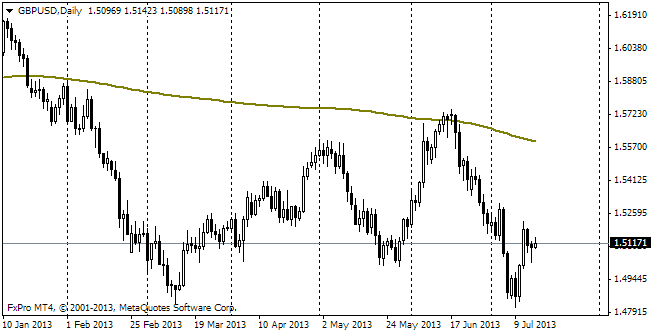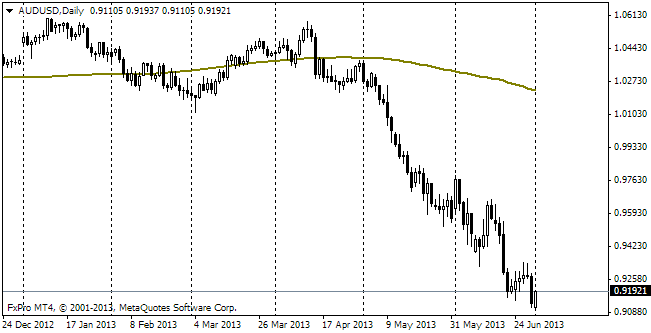EUR/usd
Last week the euro was under such a strong pressure that even on Friday eurusd couldn't escape falling to fresh local lows. The pair sank to 1.3700, which hasn't been seen since late February. This can be explained by the short-term flight to dollars for portfolio rebalancing, so traditional for the end of the month/quarter. The forces which further came in effect were less powerful, but they were enough for rehabilitation of the single currency. In the afternoon the pair rose to 1.3770 and closed the week at 1.3750. Today is the last trading day of the quarter, so the dollar may stay in demand, though the most part of this demand is likely to be realized on Friday. Regarding news, the week is promising to be busy – there will be both the US employment data and the ECB's decision on interest rates. Before the release of the American employment statistics there will be a series of secondary indicators, which may unveil the real state of affairs, so investors and traders will monitor with care this week's publications of ISM and ADP and weekly unemployment claims. As to indicators of the ECB's rate, we have only the CPI Flash Estimate, scheduled for release today. The inflation is expected to show further slowdown to the annual rate of 0.6%. It can become the lowest level since November 2009. However, the market is likely to show strong reaction only in case of sharp deviation from the expectations. Another important constituent – the ECB's desire to ease the policy – seems to be in our pocket already as last week we heard about it from several members, including Germany's representatives and the ECB's governor draghi. Thus, the downward risks still weigh upon the euro, though much has already been built into the quotes.
GBP/USD
Despite last week's failures of the euro and franc, another EU currency – the pound – looked quite impressive. The cable marked every day with growth, and by the end of the week it had grown by slightly less than two figures. It is not the most impressive result, but it was enough to rehabilitate the sterling, which nearly began to fall. It is all about the comments of the BOE's officials, who started speaking about rate increases should the country's economy stabilize. The markets took it as a hint as the British growth rate in the last three quarters can be called not only normal, but exemplary for the eurozone and the USA. Unemployment and retail sales have performed impressively and today we expect a release of lending statistics. The pound will be intact if these indicators ( net consumer credit and mortgage approvals) remain close to the current levels, which are significantly better than the rates of the previous year.

USD/JPY
The yen suffered selling at the end of the previous week. The quite unexpected flight from 102 to 103 makes us think that the yen still has some buyers and that the pressure on the pair, caused by the geopolitical tensions and the seasonal profit repatriation, will gradually subside, giving way to fundamental factors, like the US tapering in contrast to the expectations of fresh investments by the BOJ.

AUD/USD
This night the RBA will announce its next decision on the interest rate. Like in the recent months we shouldn't expect that the rate will be changed, but Stevens' comments should be taken into consideration. A month ago he stopped saying that the AU dollar rate was too high and pointed out returning to the trend rates of economic growth and normalization of inflation. It supported the aussie. It's quite possible that this time the commentary will be quite bullish.
